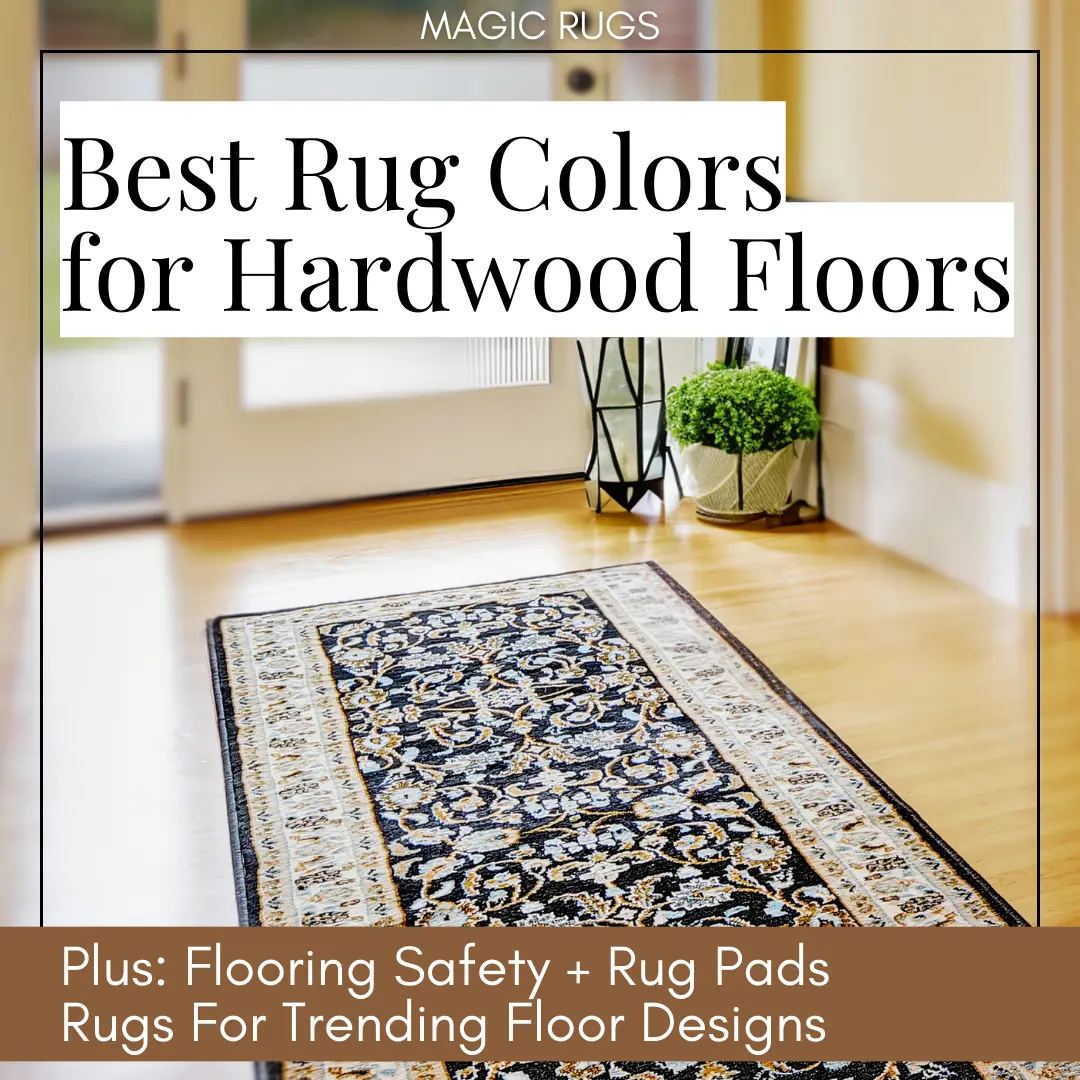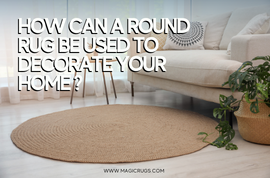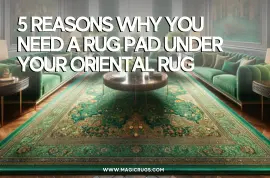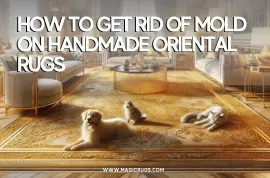Hardwood floors offer max flexibility when choosing the best color area rug. Contrasting colors are best for dark hardwo...
5 Reasons Handmade Rugs Are a Worthwhile Investment for Interior Designers
Table of Contents
- Introduction
- A brief overview of the significance of handmade rugs in interior design.
- Preview of the five key reasons handmade rugs are considered a valuable investment.
- Unique Artistry and Craftsmanship
- Exploration of the traditional techniques and personal artistry involved in creating handmade rugs.
- The impact of craftsmanship on the aesthetic and monetary value of rugs.
- Timeless Appeal and Versatility
- Discussion on how handmade rugs transcend trends and complement various design styles.
- Examples of how interior designers can incorporate these rugs into diverse spaces.
- Value Appreciation and Collectibility
- Examination of the factors that contribute to the appreciation of handmade rugs over time.
- The appeal of handmade rugs to collectors and design enthusiasts.
- Case Studies: Handmade Rugs in Interior Design
- Real-world examples of interior design projects are enhanced by the inclusion of handmade rugs.
- Interviews with designers who specialize in integrating handmade rugs into their work.
- Conclusion
- Recap of the compelling reasons why handmade rugs are a wise investment for interior designers.
- Encouragement to explore the world of handmade rugs and their potential to transform any space.
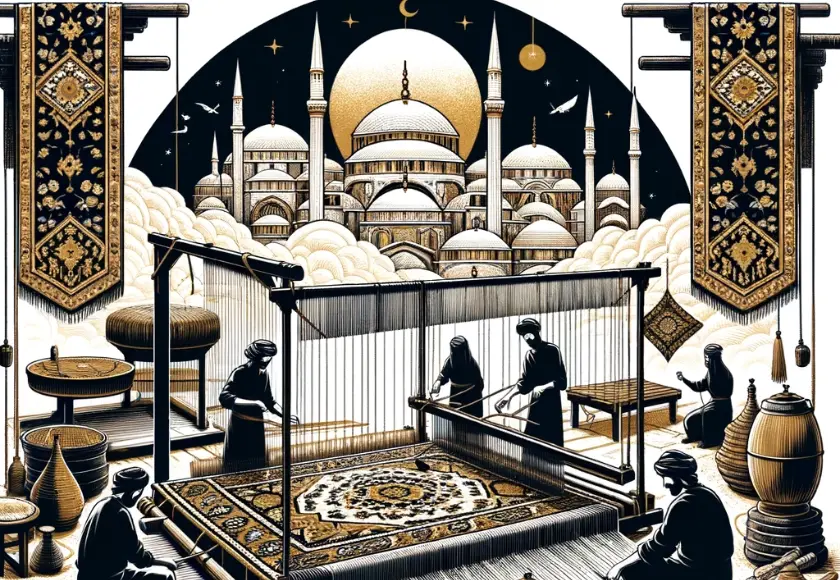
Introduction
Handmade rugs have long been cherished elements in the realm of interior design, embodying a blend of artistic expression, cultural heritage, and unparalleled craftsmanship. These pieces are not merely decorative items but are pivotal in defining the ambiance, character, and aesthetic appeal of any space they adorn. In a world increasingly dominated by mass-produced furnishings, handmade rugs stand out for their uniqueness, quality, and the story each piece tells. This blog delves into the intrinsic value of handmade rugs, uncovering five compelling reasons why they are considered a worthwhile investment for interior designers and enthusiasts alike.
The allure of handmade rugs extends beyond their visual appeal, offering a depth of value that impacts spaces in multifaceted ways. From enhancing the personal connection between the space and its inhabitants to ensuring sustainability and longevity, the reasons to choose handmade rugs are both profound and persuasive. As we explore these reasons, we aim to provide insights that will not only enlighten but also inspire interior designers to incorporate these timeless pieces into their projects, thus elevating the spaces they curate to new heights of elegance and significance.
The five key reasons we will examine include the uniqueness and authenticity of each rug, the craftsmanship and quality imbued in their creation, the sustainability aspects of their production, the cultural and historical significance they carry, and their potential for appreciation in value. Each of these factors contributes to the enduring appeal of handmade rugs, making them not just a decorative choice but a deliberate investment in beauty, history, and sustainability. Join us as we unfold the layers of value that handmade rugs bring to the tapestry of interior design, illustrating why they remain a cherished choice for those looking to imbue their spaces with depth, warmth, and enduring elegance.
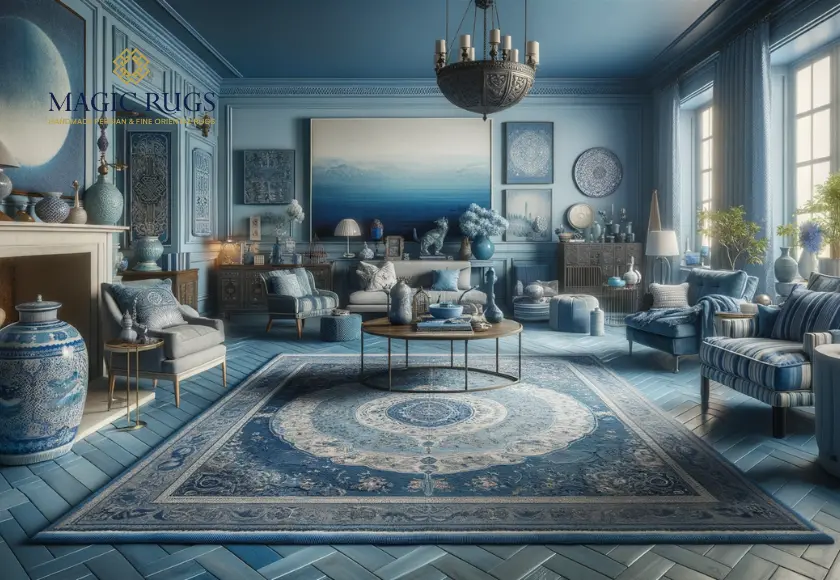
Unique Artistry and Craftsmanship
Handmade rugs are not just floor coverings; they are canvases that showcase the rich tapestry of traditional techniques and personal artistry honed over generations. Each rug is a testament to the skill, dedication, and creativity of its maker, embodying a level of craftsmanship that no machine-made counterpart can replicate. This section delves into the intricate processes involved in creating handmade rugs and examines how this craftsmanship not only elevates the aesthetic appeal of these pieces but also significantly enhances their monetary value.
Traditional Techniques in Rug Making
The creation of a handmade rug is a labor-intensive process that can take months or even years to complete, depending on the complexity of the design and the fineness of the weave. This process begins with the selection of materials, which often involves the spinning and dyeing of wool or silk by hand, using techniques passed down through generations. The colors derived from natural dyes are more vibrant, contributing to the rug's unique beauty.
Weaving a handmade rug is an art form in itself, requiring precision and patience. Artisans work on looms, meticulously tying thousands, sometimes millions, of knots to form the rug's design. This technique allows for intricate patterns and details that are not possible with machine weaving. The type of knot, density of the weave, and quality of the yarn all play crucial roles in determining the rug's final appearance and durability.
Personal Artistry and Expression
Each handmade rug is a reflection of its maker's artistic vision and cultural background. The designs often tell stories or symbolize traditional motifs, spiritual beliefs, or significant life events. This personal touch adds a layer of depth and meaning to the rug, making each piece unique and irreplaceable. The artistry involved in rug making is a form of non-verbal communication, connecting the creator and the owner through a shared appreciation of beauty and craftsmanship.
Impact on Aesthetic and Monetary Value
The unparalleled craftsmanship of handmade rugs significantly impacts their aesthetic and monetary value. The unique designs, vibrant colors, and intricate details achieved through traditional weaving techniques make these rugs true works of art, coveted for their beauty and elegance. The labor-intensive nature of their creation, coupled with the skills and experience of the artisans, also contributes to their high value. A well-crafted handmade rug can last for generations, becoming more beautiful with age, which adds to its investment appeal.
Furthermore, the rarity and uniqueness of each handmade rug increase its collectibility and potential for appreciation in value over time. Collectors and enthusiasts are willing to pay premium prices for pieces that showcase exceptional craftsmanship, historical significance, or unique artistic expression. As a result, investing in a handmade rug is not just an investment in decor but in a piece of art that holds the potential to grow in value.
In conclusion, the unique artistry and craftsmanship of handmade rugs set them apart as not merely decorative items but as investments in beauty, culture, and history. The traditional techniques and personal expression involved in their creation imbue these pieces with a life and character unmatched by mass-produced alternatives, making them a valuable and worthwhile addition to any interior design project.
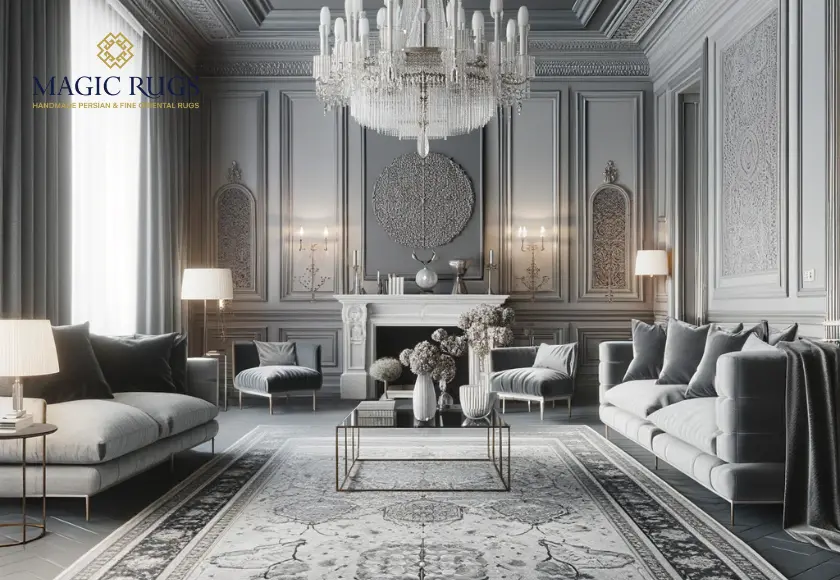
Timeless Appeal and Versatility
Handmade rugs possess a unique quality that allows them to stand the test of time, not just in terms of durability but also in their ability to transcend fleeting design trends. Their timeless appeal and versatility make them an invaluable asset for interior designers, offering the flexibility to complement a wide range of design styles from traditional to contemporary. This section explores how the enduring beauty of handmade rugs can enhance various interior spaces and provides examples of how they can be seamlessly incorporated into diverse design themes.
Transcending Trends
The appeal of handmade rugs lies in their unique artistry and the stories they tell through their patterns, colors, and textures. Unlike mass-produced rugs, which often mimic transient trends, handmade rugs are rooted in traditions that have been refined over centuries. This historical depth imbues them with a timeless quality, allowing them to fit seamlessly into any design aesthetic without appearing dated. Whether placed in a minimalist, modern apartment or a classically styled home, handmade rugs bring warmth, character, and a sense of continuity.
Complementing Various Design Styles
Handmade rugs are incredibly versatile and capable of enhancing and unifying interior spaces. Their varied designs—from intricate floral motifs and geometric patterns to subtle, monochromatic textures—enable them to serve as the centerpiece of a room or as a complementary element that ties together different decor elements.
- Traditional Interiors: In classic or vintage-inspired spaces, handmade rugs with elaborate patterns and rich colors can underscore the elegance and sophistication of traditional design, adding depth and luxury.
- Modern and Contemporary Spaces: For modern interiors, a handmade rug with bold geometric patterns or abstract designs can add a splash of color and texture, providing a counterpoint to sleek furniture and neutral color schemes.
- Eclectic and Bohemian Settings: Handmade rugs are particularly effective in eclectic or bohemian interiors, where their vibrant colors and diverse patterns can harmonize disparate elements, creating a cohesive yet dynamic aesthetic.
- Minimalist Decor: In minimalist spaces, where the emphasis is on simplicity and space, a handmade rug with a subtle pattern and soft color palette can add warmth and texture without overwhelming the room.
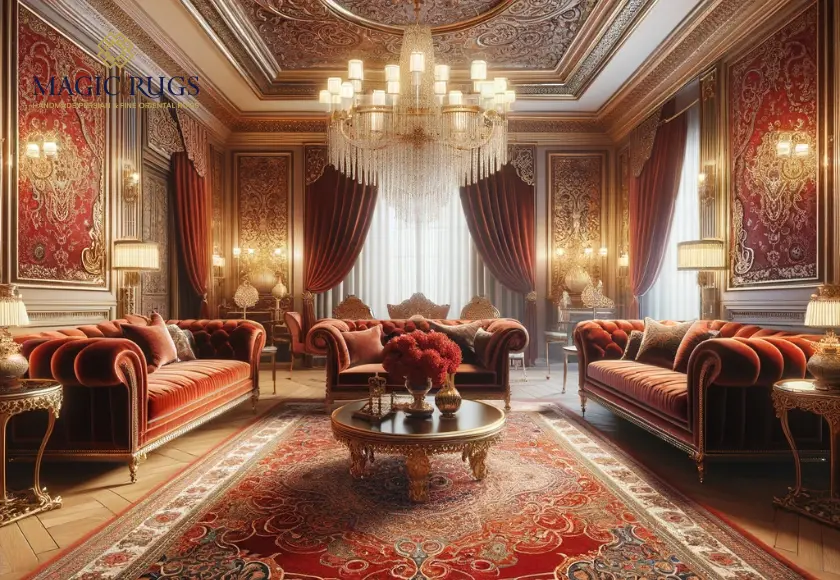
Examples of Incorporation into Diverse Spaces
- Living Rooms: A large, plush handmade rug can anchor the seating area, adding comfort and luxury while complementing the room’s decor.
- Dining Rooms: A handmade rug under the dining table can enhance the room's elegance, providing a soft backdrop that enriches the dining experience.
- Bedrooms: Placing a soft, luxurious handmade rug beside the bed ensures a warm welcome each morning, adding a personal touch that enhances the room's comfort and style.
- Entryways and Hallways: Handmade runners in entryways or hallways create a warm, inviting ambiance, making a strong first impression while introducing the home's aesthetic theme.
The ability of handmade rugs to adapt to and enhance various design styles makes them a favorite among interior designers. Their timeless appeal ensures that they remain a focal point and cherished element of any space, irrespective of changing trends. By incorporating handmade rugs into their projects, designers can create spaces that are not only visually stunning but also rich in texture, history, and warmth, offering a testament to the enduring beauty and versatility of these exquisite pieces.
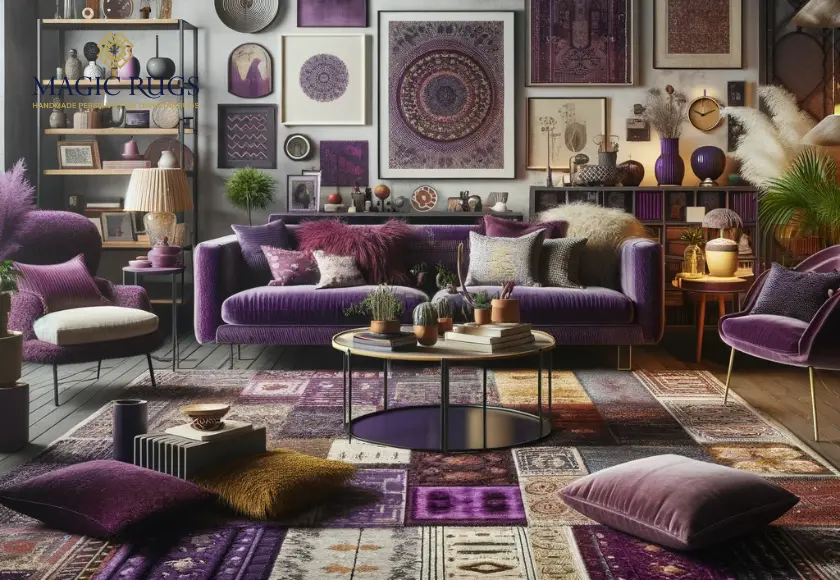
Value Appreciation and Collectibility
Handmade rugs are not just decorative elements but are also considered valuable assets that appreciate over time. This appreciation in value is not arbitrary but is influenced by several key factors, making these rugs highly sought after by collectors and design enthusiasts alike. In this section, we explore the components contributing to the financial and aesthetic value of handmade rugs, shedding light on their appeal as both investments and irreplaceable pieces of art.
Factors Contributing to Value Appreciation
- Rarity and Uniqueness: The unique nature of each handmade rug, with its specific design, color palette, and weaving technique, inherently limits its availability. As certain designs become scarce or as the techniques used to create them become less common, the rarity of these rugs increases, driving up their value.
- Quality and Condition: Handmade rugs made from high-quality materials and maintained in excellent condition over the years are more likely to appreciate. The craftsmanship involved in creating these pieces ensures they endure, making well-preserved rugs especially valuable to collectors.
- Historical and Cultural Significance: Rugs that have a clear provenance or that are made in regions with a rich history of rug weaving are often more valuable. The story behind a rug, including its origins and the context in which it was made, adds to its allure and desirability among collectors.
- Artistic Merit: Rugs that are considered artistic masterpieces, either due to their intricate designs, innovative use of color, or exceptional craftsmanship, are more likely to be sought after. The aesthetic appeal of a rug, along with its artistic integrity, plays a crucial role in its collectibility and value appreciation.
- Market Trends: The demand for handmade rugs in the global market can also influence their value. Trends in interior design, as well as growing awareness and appreciation of cultural and artisanal goods, can lead to increased interest and higher prices for handmade rugs.
Appeal to Collectors and Design Enthusiasts
Handmade rugs hold a special place in the hearts of collectors and design enthusiasts for several reasons:
- Investment Potential: For collectors, the potential for value appreciation makes handmade rugs a wise investment. Like fine art, these rugs can increase in worth over time, offering financial returns in addition to aesthetic enjoyment.
- Cultural and Artistic Appreciation: Collectors often value the cultural heritage and artistic expression embodied in handmade rugs. Each piece tells a story, reflecting the traditions, history, and skills of its creators.
- Decorative Versatility: Design enthusiasts appreciate handmade rugs for their ability to elevate any space. Their timeless appeal and versatility make them suitable for a wide range of interior styles, from traditional to contemporary.
- Personal Connection: Owning a handmade rug often fosters a personal connection to the piece. The knowledge that it was crafted by skilled artisans using age-old techniques adds a layer of meaning and appreciation that transcends its decorative function.
In summary, the value of handmade rugs extends beyond their immediate aesthetic appeal, embodying elements of artistry, history, and craftsmanship that are recognized and cherished by collectors and design enthusiasts around the world. As tangible pieces of cultural heritage, they represent a meaningful investment that not only enhances the beauty of a space but also holds the potential for appreciation in value, making them a profound addition to any collection.
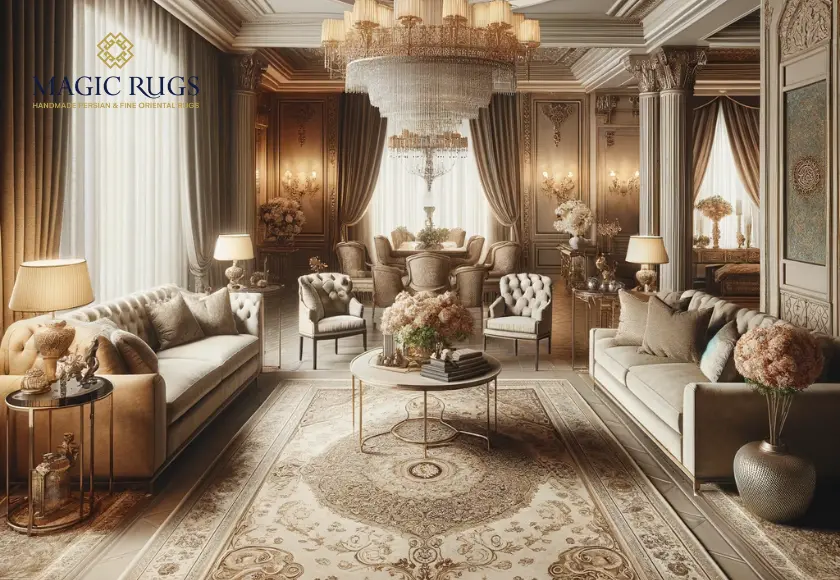
Case Studies: Handmade Rugs in Interior Design
Handmade rugs have the unique ability to transform any space, adding layers of warmth, texture, and history. This section of the blog explores real-world examples of interior design projects that have been significantly enhanced by the inclusion of handmade rugs. Through interviews with designers who specialize in incorporating these artisanal pieces into their work, we gain insight into the practical and aesthetic considerations that guide their choices.
Enhancing Luxury Living Spaces
Project Overview: A high-end residential project that aimed to blend modern luxury with classical design elements. The interior designer selected a large, intricately patterned Persian rug to anchor the living room, creating a focal point that draws all other elements together.
Designer Insight: The designer emphasized the importance of choosing a rug that not only matched the color scheme of the room but also introduced a level of depth and history that only a handmade rug could offer. The Persian rug's rich colors and complex design added an element of sophistication and luxury, elevating the entire space.
Modern Minimalism Meets Rustic Charm
Project Overview: A minimalist apartment with an open floor plan, where the challenge was to define distinct living areas without cluttering the space. A series of handmade kilim rugs were used to delineate these areas, adding warmth and texture to the minimalist decor.
Designer Insight: In this case, the designer focused on the versatility of handmade rugs to complement various design styles. The kilims, with their flatweave and geometric patterns, integrated seamlessly into the modern aesthetic while introducing a rustic, earthy element that made the space more inviting.
Corporate Spaces with Character
Project Overview: A corporate office redesign aimed at creating a more welcoming and inspiring environment for employees and visitors. Handmade rugs were strategically placed in the reception area, boardroom, and common spaces to add color and warmth.
Designer Insight: The designer highlighted the challenge of making corporate spaces feel personalized and comfortable. Handmade rugs were chosen for their unique designs, which introduced an artful aspect and helped to soften the corporate feel. The durability of these rugs was also a key factor, given the high traffic in office environments.
Boutique Hotel with Local Flair
Project Overview: A boutique hotel that wanted to reflect the local culture and history in its decor. Handmade rugs sourced from local artisans were used throughout the hotel, from the lobby to the guest rooms.
Designer Insight: The designer aimed to create a connection between the guests and the local heritage. By selecting handmade rugs that reflected the area's weaving traditions, the hotel not only supported local artisans but also offered guests a unique, culturally enriching experience.
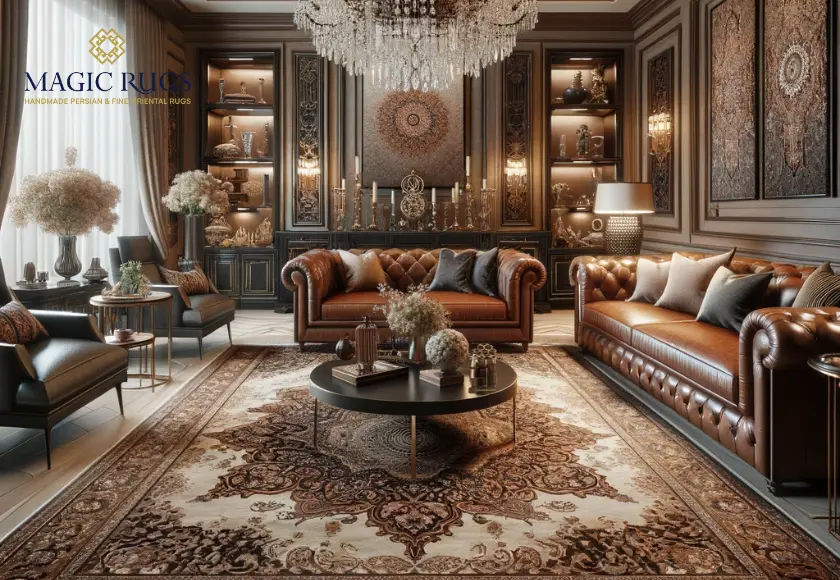
Interviews with Designers
Through interviews, designers shared their strategies for selecting and integrating handmade rugs into various projects. Key takeaways included:
- The Importance of Storytelling: Designers often choose rugs that have a story behind them, believing that these stories add depth and interest to the spaces they decorate.
- Customization Opportunities: Many designers work directly with artisans to customize rugs, ensuring a perfect fit for the space and design vision.
- Sustainability Focus: There's a growing preference for sustainable and ethically produced rugs, with designers and clients alike valuing the environmental and social impact of their choices.
These case studies and insights demonstrate the transformative power of handmade rugs in interior design. By carefully selecting and integrating these pieces, designers can create spaces that are not only visually stunning but also rich in story and character.
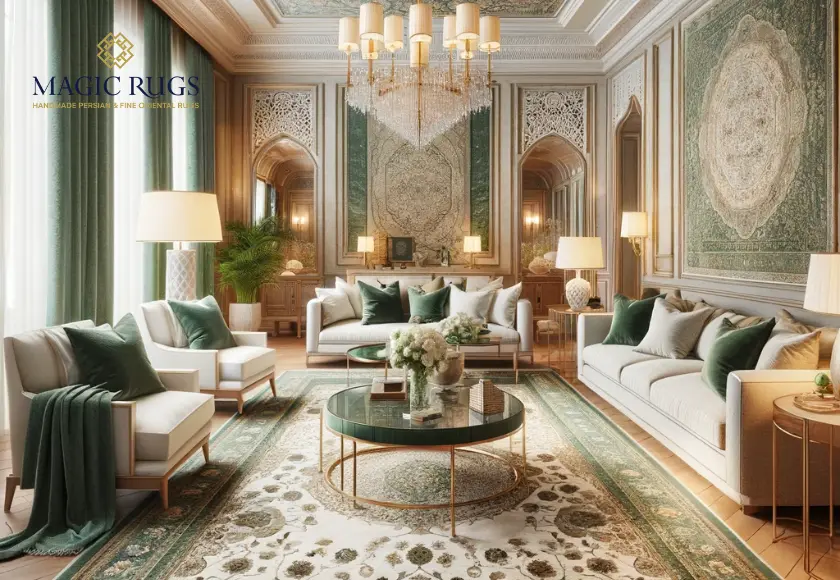
Final Thought
Throughout this exploration of handmade rugs, we've uncovered a wealth of reasons why these pieces represent a wise investment for interior designers and enthusiasts of thoughtful, expressive spaces. Handmade rugs are not just decor items; they are profound expressions of cultural heritage, artistry, and sustainable practices. Their unique artistry and craftsmanship, durability and longevity, timeless appeal and versatility, commitment to sustainability and ethical production, and their potential for value appreciation and collectibility stand out as compelling reasons to choose these artisanal pieces over their mass-produced counterparts.
Handmade rugs possess an intrinsic value that goes beyond the immediate aesthetic appeal, offering layers of depth and history that can transform any space. The traditional techniques and personal artistry involved in their creation ensure that each rug is a one-of-a-kind masterpiece, imbued with a sense of identity and story that is unparalleled. The use of high-quality, natural materials and age-old weaving techniques not only promises incredible durability and longevity but also contributes to the sustainability and ethical integrity of the decor.
The versatility of handmade rugs allows them to transcend trends, fitting seamlessly into a variety of design styles from modern minimalist to classic traditional, proving that these pieces can enhance and complement any interior design project. Moreover, their ability to retain and even increase in value over time makes them not just a purchase but a long-term investment in beauty and craftsmanship.
As we conclude this exploration, we encourage interior designers and home decor enthusiasts to delve into the world of handmade rugs. Discover the rich histories, vibrant cultures, and exquisite craftsmanship that each piece represents. Consider how incorporating handmade rugs into your projects or homes can elevate the space, creating an environment that is not only visually stunning but also rich in story, character, and sustainable values.
The investment in a handmade rug is an investment in a piece of art that you can walk on—a functional, beautiful, and timeless addition to any space. Let the allure of handmade rugs inspire your next project, and embrace the opportunity to transform any room into a testament to the enduring appeal of artisanal beauty and craftsmanship.
Explore more trending collections!
Share:

